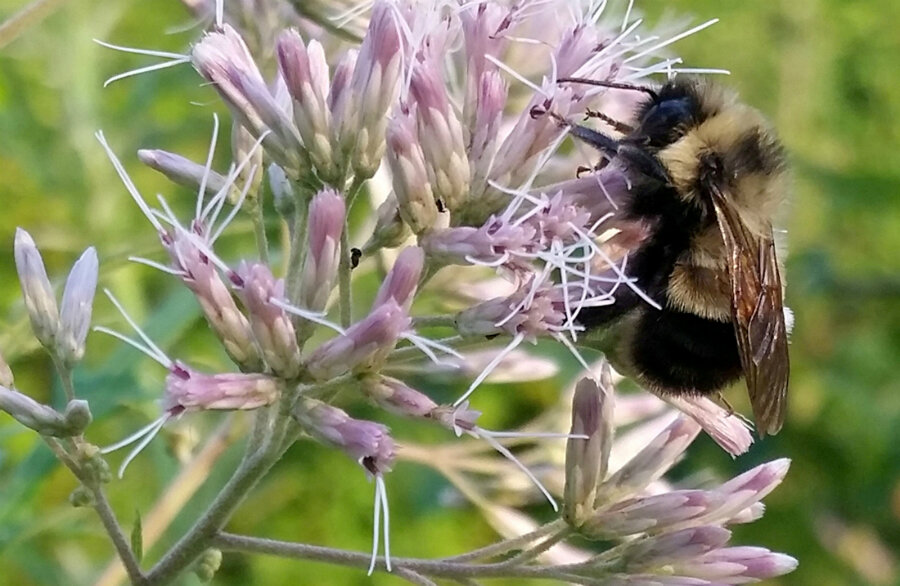Rusty-patched bee finally gets its endangered listing
Loading...
On Tuesday, the rusty-patched bumblebee became the first bee in the continental United States to take an official spot on the US Fish and Wildlife Service's endangered species list.
The insect will receive all the benefits that come with its new legal status, including protection from the government against tampering with existing habitats and authorization of land purchases that would expand the range of the bee, which has shrunk drastically over the past several years. The new listing has been hailed by a number of conservation groups, including the Xerces Society for Invertebrate Conservation, which filed the petition that led the government to initially consider putting the bee on the list.
"Now that the Fish and Wildlife Service has listed the rusty-patched bumblebee as endangered, it stands a chance of surviving the many threats it faces," said Sarina Jepsen, the group's director of endangered species.
But it wasn't easy getting to this point. The bee's endangered species protections, which had been approved last year, were supposed to kick in when it was scheduled to join the list on Feb. 10, 2017. But after the election of President Trump, a freeze was placed on all new federal regulations, delaying the listing of the bee. Some feared the freeze could end up being permanent, given Mr. Trump's many anti-regulatory positions and anti-environmentalist rhetoric.
Reacting to the delay, the Natural Resources Defense Council (NRDC) filed a lawsuit to trigger the listing, saying that the US Department of the Interior, which heads the US Fish and Wildlife Service, had broken the law because it had not opened the decision to halt the listing to public notice or comment. They also argued that the listing became final when the bee's endangered status was initially published in January.
But six other groups, including the American Petroleum Institute and the National Association of Home Builders, hailed the temporary halt, even sending a petition to the government to delay the listing further to Jan. 11, 2018.
"Once the listing decision takes effect, virtually every industry operating within the species' range – from agriculture and crop production to residential and commercial development, from energy production and distribution to manufacturing, will be profoundly affected," their petition said.
The groups claimed that not enough was known about the bee's underground nesting and hibernation to determine whether new projects would harm the bees habitat or not. The Fish and Wildlife Service website, however, has posted information to help developers determine whether an area is likely to host rusty-patched bumblebees, including tips on how to meet the legal requirements to protect them.
The bee's decline has mirrored the fall of a number of bee species in recent years. As The Christian Science Monitor previously reported:
These insects are an essential part of the ecosystem, responsible for pollinating produce and wildflowers alike.
"Pollinators are small but mighty parts of the natural mechanism that sustains us and our world," said Tom Melius, the service's Midwest regional director, according to the Associated Press. "Without them, our forests, parks, meadows and shrublands, and the abundant, vibrant life they support, cannot survive, and our crops require laborious, costly pollination by hand."
Once a common sight across 20 American states and two Canadian provinces, the rusty-patched bumblebee has been observed in only 13 states and one province since 2000. Accompanying this territorial collapse, colony counts are down almost 90 percent.
The reasons are multifold. Not only bumblebees but bee populations in general have declined precipitously in the face of a perfect storm of disease, pesticides, climate change, and habitat loss.
The wide range of bee species in trouble and the myriad factors affecting their decline makes it difficult to know how best to help the insects. But for the rusty-patched bumblebee, finally becoming an officially endangered species is a good start, said Rebecca Riley, a senior attorney with the NRDC.
"Federal protections may be the only thing standing between the bumblebee and extinction," she said.
This article contains material from the Associated Press.








